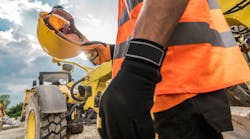This is my favorite column of the year to write (and maybe it’s your favorite to read), as it gives me the chance to step aside and let the readers take over. Every year, when we conduct the EHS Today National Safety and Salary Survey (see p. 8), we offer all respondents the opportunity to weigh in (anonymously) on any EHS profession topic they’d like.
And we get comments—hundreds of comments!—that when taken all together become a kind of tapestry of insights into what safety leadership looks like. This year’s survey included 1,100 respondents (200 more than last year’s survey), and as it’ll become clear, safety leaders are as much alike as they are different, with the common denominator being a passion for keeping people safe. The best way I can describe who a safety leader is, what they do every day, and what kinds of workplace issues are most important to them, is to just let them tell you themselves:
- The stress that is being caused right now from supply chain shortages is significant. Stressed employees are unhappy employees. With the slow supplies, manufacturers are putting more pressure on employees to get the production up, causing even more stress. We need a way to relieve some of the stress that is involved.
- As the cost of manufacturing goes up and the labor shortage prevails, more tasks are being added to existing staff, which results in workarounds that do not support regulatory and corporate safety and environmental directives.
- I am an EHS consultant—I would never work as the one-and-only safety manager in industry again. Too much stress and strain.
- As we are responsible for multiple electrical contractors, not all of our companies have an organizational commitment to safety. It is difficult, if not impossible, to drive safety to the workforce if your management team is not supportive.
- As we are more challenged with finding labor, we’re finding more people who don’t want to be engaged with their work—just collect a paycheck for a short time and leave.
- Investing in the employee (i.e., safety) is as important as investing in tools and equipment. This needs to be emphasized to management regularly.
- COVID burnout is real. It’s been a struggle to stay in the EHS field where I’m consistently viewed as the bad guy.
- Our industry is wasting too much time on social and political correctness. It is taking us away from our primary mission, which is to provide a safe work environment for our employees.
- Mental health awareness and how to deal with it is a challenge for safety professionals who have been in the field for an extended period of time.
- Too many EHS departments don’t consider the needs of the business along with EHS goals.
- My company encourages certifications in safety and pays for those certifications. This is very encouraging.
- It is becoming more important to provide meaningless paperwork to the construction managers than it is to be out on the jobsite providing safety training to the employees that need it.
- Currently seeing the field transition with many EHS professionals retiring. More institutions need to provide internship programs.
- The biggest challenge is doing more with less and having to meet the expectations of great outcomes—expecting culture changes to occur with no commitment or encouragement from mid-level management. EHS is viewed as a necessary evil versus a value-added commodity with long-term positive impact.
- I love what I do and the time that put towards training the workforce; it shows huge dividends.
- We’re going through a merger of multiple companies. They’ve taken the one-size-fits-all approach for safety. Due to the fact that the range of work, company, risk, workforce, etc., varies not only by company but also by site, this approach does not work.
- As a young woman in the field, it is hard to get the respect I deserve.
- Skilled safety professionals are leaving the workplace for other positions, which leaves gaps in the safety department in terms of personnel and institutional knowledge.
- COVID has brought to light the importance of safety professionals, and now we need our pay to reflect this.
- I’ve been a safety professional for more than 25 years, and have enjoyed the industry I work in immensely. My motto is: If I won the lottery I would do this for free.
That’s just a small sampling of comments we received. As ever, we’re grateful for the willingness of safety leaders to share the challenges, frustrations, accomplishments and celebrations that characterize a life dedicated to occupational health and safety. And please feel free to share your own definition of what a safety leader is… after all, who would know better than you?
